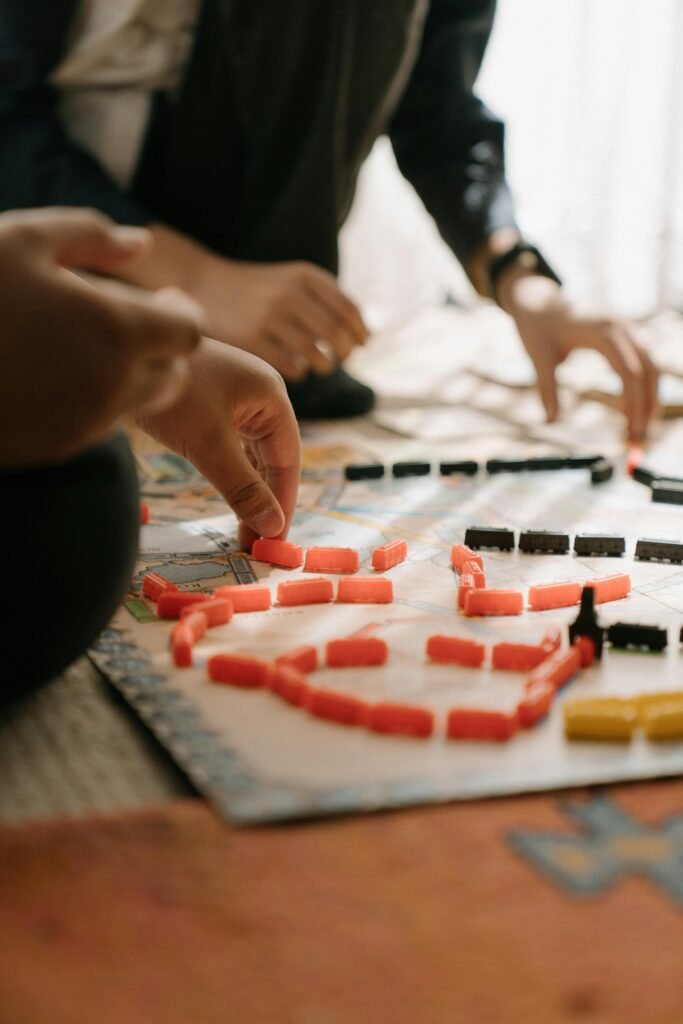Life feels like a storm sometimes, doesn’t it? One minute, the waters are calm, and the next, waves of uncertainty, stress, and worry are crashing down. Whether it’s a personal crisis, professional pressure, or the weight of world events, navigating these challenging times can take a serious toll on our mental well-being.
It’s easy to feel lost, anxious, and completely drained. But here’s a truth to hold onto: you have more power than you think. You can’t always control the storm, but you can learn to anchor yourself.
This guide isn’t about “toxic positivity” or ignoring the very real difficulties you’re facing. It’s about providing you with practical, actionable tools to build resilience, protect your peace, and stay mentally well, even when the world feels chaotic. Let’s dive in.

Table of Contents
1. Give Yourself Permission to Feel
Acknowledge and Validate Your Emotions
Before you can manage your feelings, you have to acknowledge them. In a culture that often prizes stoicism, it’s tempting to push down feelings of sadness, fear, or anger. We tell ourselves to “be strong” or “just get over it.”
But emotions are data. They are signals from your mind and body. Ignoring them is like ignoring the check engine light in your car. So, the first and most crucial step is to simply allow yourself to feel whatever you’re feeling, without judgment.
How to do it:
- Name it to tame it: Take a moment to identify the specific emotion. Are you anxious? Frustrated? Grieving? Simply putting a name to the feeling can reduce its power.
- Practice self-compassion: Talk to yourself as you would a dear friend. Say, “It’s okay to feel this way. This is a normal reaction to a difficult situation.”
2. Create an Anchor with a Simple Routine
When the outside world is chaotic, your internal world needs structure. A routine can be a powerful anchor, providing a sense of stability and predictability that calms the nervous system.
This doesn’t mean you need a rigid, minute-by-minute schedule. It’s about creating small, consistent rituals that ground your day.
Build Your Grounding Routine
- Morning Ritual: Start your day with intention before the world rushes in. This could be 10 minutes of stretching, journaling one page, or simply sipping your coffee in silence without looking at your phone.
- Evening Wind-Down: Signal to your brain that it’s time to rest. Turn off screens an hour before bed, read a chapter of a book, do some light yoga, or listen to a calming podcast. These small acts create a buffer between the stress of the day and a restful night.
3. Curate Your Information Diet
Constant exposure to negative news, alarming headlines, and heated social media debates is a recipe for chronic stress and anxiety. While it’s important to stay informed, you need to be the gatekeeper of your own mind.
Think of it as an “information diet.” You wouldn’t eat junk food all day and expect to feel physically well; the same applies to the information you consume for your mental health.
How to Set Healthy Boundaries
- Schedule News Check-ins: Instead of doomscrolling all day, set aside specific times to check the news, perhaps once in the morning and once in the evening for 15 minutes each.
- Choose Your Sources Wisely: Stick to a few reliable, balanced news sources. Unfollow or mute accounts on social media that consistently leave you feeling angry, anxious, or hopeless.
- Go on a “News Fast”: If you’re feeling particularly overwhelmed, give yourself permission to completely unplug from the news for a day or even a weekend.
4. Move Your Body to Soothe Your Mind
The connection between physical movement and mental health is undeniable. Exercise is one of the most effective and immediate ways to reduce stress hormones like cortisol and boost mood-lifting endorphins.
You don’t have to run a marathon. The key is to find a form of movement you enjoy and can do consistently.
Find Movement That Feels Good
- A Gentle Walk: A 20-30 minute walk, especially in nature, can do wonders for clearing your head and shifting your perspective.
- Stretching or Yoga: These practices help release physical tension where we often hold stress (like our shoulders and neck) and connect us back to our breath.
- Dancing It Out: Put on your favorite playlist and just move for 5-10 minutes. It’s a fantastic way to release pent-up energy and emotion.
5. Fuel Yourself with Brain-Boosting Nutrition
What you eat directly impacts your mood and cognitive function. During stressful times, we often crave sugary, processed foods for a quick comfort hit. While that’s okay occasionally, consistently relying on them can lead to energy crashes and exacerbate feelings of anxiety.
Focus on nourishing your brain with whole foods.
Simple Nutritional Swaps
- Hydrate, Hydrate, Hydrate: Even mild dehydration can affect your mood and ability to concentrate. Keep a water bottle handy throughout the day.
- Incorporate Omega-3s: Foods rich in omega-3 fatty acids, like salmon, walnuts, and flaxseeds, have been shown to support brain health.
- Limit Caffeine and Sugar: These can spike anxiety and disrupt sleep. Opt for herbal tea or water instead of that third cup of coffee or soda.
6. Prioritize Sleep as a Non-Negotiable
Sleep is not a luxury; it’s a biological necessity. It’s when your brain processes emotions, consolidates memories, and literally cleanses itself of metabolic waste.
When you’re sleep-deprived, your emotional regulation is one of the first things to go. Small stressors feel monumental, and your ability to cope plummets.
Improve Your Sleep Hygiene
- Consistent Schedule: Try to go to bed and wake up around the same time each day, even on weekends. This helps regulate your body’s internal clock.
- Create a Restful Environment: Make your bedroom a sanctuary for sleep. Keep it dark, cool, and quiet.
- Avoid Screens Before Bed: The blue light emitted from phones, tablets, and computers can interfere with your body’s production of melatonin, the sleep hormone.
7. Practice Mindfulness to Find Your Center
Mindfulness is the simple practice of paying attention to the present moment without judgment. It’s a powerful antidote to anxiety, which often involves worrying about the future, and depression, which can involve ruminating on the past.
By focusing on the here and now, you can create a space of calm amid the chaos.
Simple Mindfulness Exercises
- The 5-4-3-2-1 Method: When you feel overwhelmed, pause and name: 5 things you can see, 4 things you can feel, 3 things you can hear, 2 things you can smell, and 1 thing you can taste. This grounds you in your senses.
- Mindful Breathing: Simply focus on the sensation of your breath entering and leaving your body for 2-3 minutes. When your mind wanders, gently guide it back to your breath.
8. Lean on Your Support System
Challenging times are not meant to be weathered alone. Connection is a fundamental human need, and reaching out to trusted friends, family, or community members is a sign of strength, not weakness.
Sharing what you’re going through can reduce feelings of isolation and provide you with fresh perspectives.
Cultivate Your Connections
- Be Intentional: Don’t wait for others to reach out. Send that text, make that call, or schedule that coffee date.
- Communicate Your Needs: Be clear about what you need. Is it advice? Or do you just need someone to listen? It’s okay to say, “I’m not looking for solutions right now, I just need to vent.”
9. Re-engage with Hobbies and Joy
When you’re stressed, it’s common for the things you once enjoyed to fall by the wayside. But engaging in hobbies and activities that bring you joy is essential for your mental well-being.
These activities, often called “flow states,” allow you to become fully immersed in something positive, giving your worried mind a much-needed break.
Rediscover What You Love
- Think back: What did you love to do as a kid? Drawing, building, playing music?
- Start small: You don’t need to commit hours. Spend 15 minutes listening to an album you love, tending to your plants, or working on a puzzle. The goal is to sprinkle moments of joy throughout your week.

10. Cultivate a Gratitude Practice
Gratitude is a powerful practice that can shift your entire mindset. It doesn’t ignore the bad, but it actively looks for the good, training your brain to notice positive experiences. During tough times, this can be an essential counterbalance to the weight of negativity.
Easy Ways to Practice Gratitude
- Gratitude Jar: Write down something you’re grateful for on a slip of paper each day and put it in a jar. When you’re feeling low, you can read through them.
- Three Good Things: At the end of each day, write down three things that went well and your role in making them happen. This builds a sense of agency and optimism.
11. Set Small, Manageable Goals
When you’re facing significant challenges, your overall goals can feel impossibly far away, which can be demoralizing. The solution is to break things down into small, achievable steps.
Accomplishing these mini-goals provides a sense of control and progress, which builds momentum and self-confidence.
Focus on the Next Step
- What is one thing I can do today? Instead of “I need to find a new job,” the goal becomes “I will update my resume for 30 minutes today.”
- Celebrate the small wins: Did you make your bed? Did you go for that walk? Acknowledge it! Every small step forward is a victory.
12. Know That It’s Okay to Ask for Help
Finally, and perhaps most importantly, know when to seek professional support. Trying to manage persistent mental health challenges on your own is like trying to fix a broken bone without a doctor.
Therapists, counselors, and support groups are trained to provide you with the strategies and support needed to navigate difficult times. Reaching out is a courageous and proactive step toward healing.
When to Seek Help
- Your feelings of sadness or anxiety are persistent and interfering with your daily life.
- The strategies you’re trying on your own aren’t providing enough relief.
- You are turning to unhealthy coping mechanisms like substance abuse.

You Are More Resilient Than You Know
Navigating life’s challenges isn’t easy, but it is possible to protect your mental well-being along the way. By integrating these strategies—validating your feelings, building routines, moving your body, and connecting with others—you create a powerful toolkit for resilience.
Remember to be patient and compassionate with yourself. Some days will be harder than others. The goal isn’t perfection; it’s progress. Start with one small step today. You have the strength within you to weather this storm and emerge stronger on the other side.
What’s Your Anchor?
We’d love to hear from you. What is one strategy you use to stay mentally well during challenging times? Share your experience in the comments below—your story could be the lifeline someone else needs to read today.